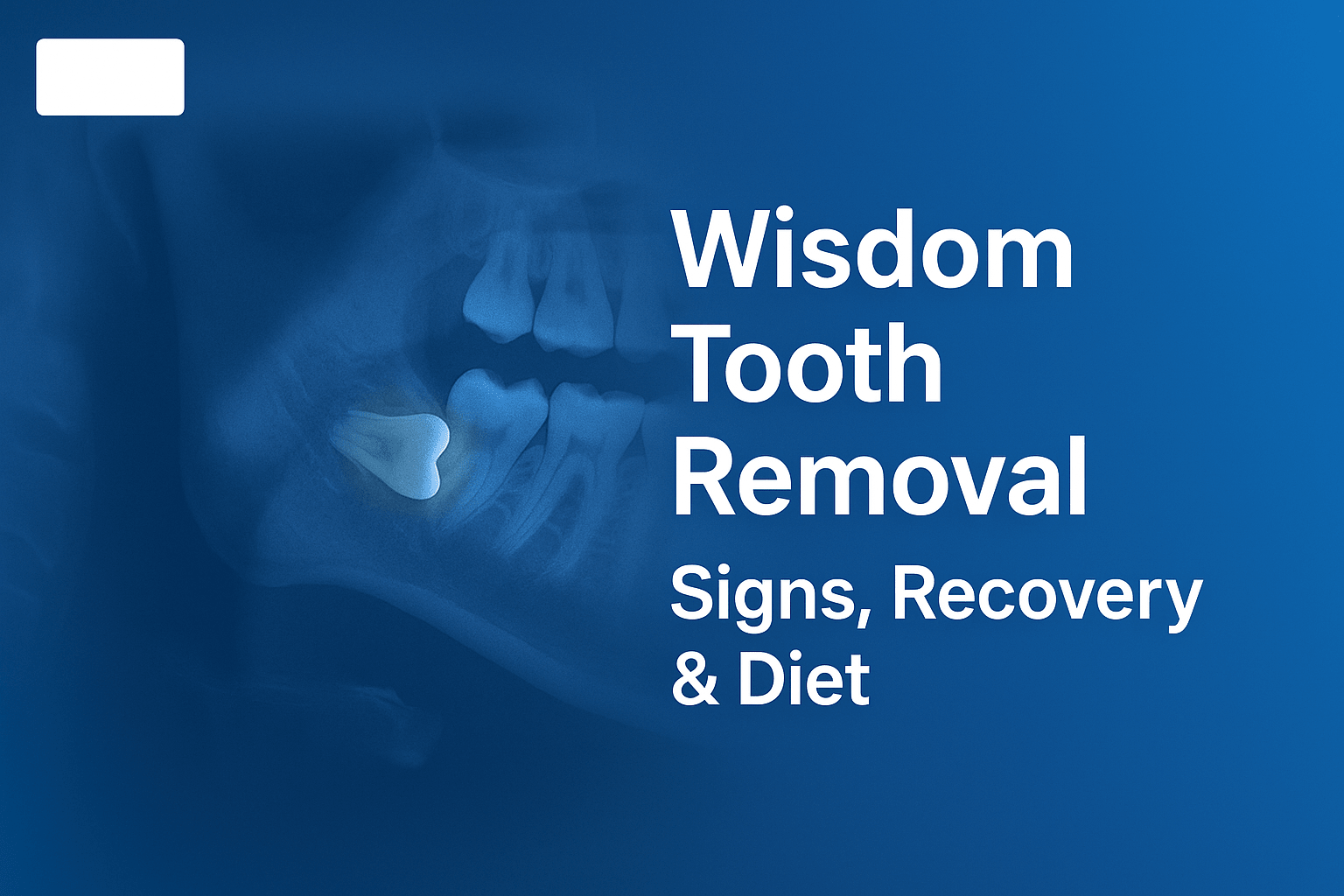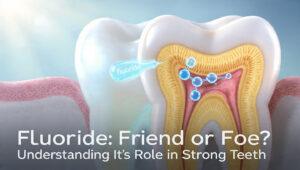Wisdom teeth (third molars) usually erupt between 17–25 years. Some fit in fine; many don’t—causing pain, swelling, decay on the neighbor tooth, or repeated infections. This guide explains when removal is needed, the procedure, day-by-day recovery, and a safe diet plan—tailored for patients in Guwahati, Assam.
When Does a Wisdom Tooth Need Removal?
Common Symptoms
- Jaw pain or swelling behind the last molar
- Gum flap infection (pericoronitis): bad taste, difficulty opening mouth
- Food trapping, foul odor, cheek biting
- Headaches/earache on the same side
Clinical Reasons to Extract
- Impaction: tooth trapped against bone or the 2nd molar
- Recurrent infection or cyst on X-ray
- Caries on the wisdom tooth or the 2nd molar due to food impaction
- Orthodontic/occlusion planning when space is limited
Diagnosis & Planning
What We Check
- OPG/X-ray; CBCT for complex root positions or nerve proximity
- Medical history, medications, and bleeding risks
Anesthesia Options
- Local anesthesia (most cases)
- Conscious sedation for anxious patients (case-by-case referral)
The Extraction Procedure
Simple vs Surgical
- Simple extraction: erupted, mobile tooth; minimal bone removal
- Surgical extraction: impacted tooth → small gum incision, bone trimming and tooth sectioning; stitches placed
Typical Duration
- 20–60 minutes depending on impaction and roots
Immediate Post-Op
- Gauze bite for 30–45 min
- Cold packs (15 minutes on/off) for the first day
Recovery Timeline (Day-by-Day)
| Day | What to Expect | Care To Follow |
|---|---|---|
| 0 (Procedure Day) | Numbness for a few hours; mild oozing | Bite on gauze, start cold packs, take prescribed meds on time |
| 1–2 | Swelling peaks, soreness, limited mouth opening | Soft, cool foods; avoid spitting/straws; gentle mouth rest |
| 3–4 | Swelling starts to settle | Begin lukewarm salt-water rinses after meals (if advised) |
| 5–7 | More comfortable; stitches removal if non-resorbable | Brush carefully; keep area clean |
| 8–14 | Gradual return to normal diet | Avoid hard/spicy/seeded foods until fully comfortable |
Red flags: rising pain after Day 3, foul odor, fever, persistent bleeding, numbness that doesn’t fade—contact us immediately.
Diet Guide After Extraction
What to Eat (first 48–72h)
- Curd, chilled soups, dal, khichdi, mashed potatoes, smoothies (no seeds), scrambled eggs, soft rice, bananas
- Plenty of water; no straws (dry socket risk)
Avoid
- Very hot foods, spicy/acidic dishes, hard/crunchy items (chips, nuts), seeds (jeera/til) that can lodge in the socket
- Alcohol and smoking (delay healing)
Pain, Swelling & Dry Socket—What’s Normal?
- Pain/swelling: expected and manageable with prescribed meds + cold packs Day 0–1, then warm compresses after Day 2 if advised
- Bruising: possible, fades in a week
- Dry socket: intense throbbing pain around Day 2–4, bad taste/odor—needs in-clinic dressing; call us promptly
Protecting the 2nd Molar (the tooth in front)
Impacted wisdom teeth commonly cause cavities or bone loss on the 2nd molar. Early evaluation prevents avoidable root canals or crowns. After removal, we monitor the area until gums and bone re-shape.
Costs in Guwahati—What Affects the Fee?
- Type of impaction (vertical, mesioangular, horizontal, distoangular)
- Bone density, root curvature, nerve proximity
- Simple vs surgical extraction, sedation needs, number of teeth
- X-rays/CBCT, sutures, follow-up care
Want a clear estimate?
Share your OPG or book an evaluation for an itemized quotation.
Consult an Oral Surgeon →



